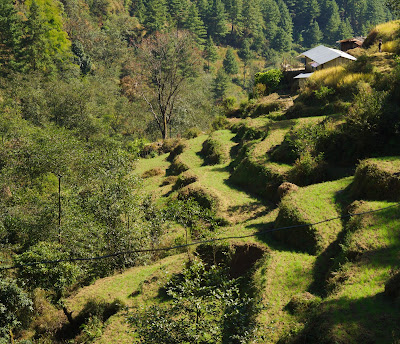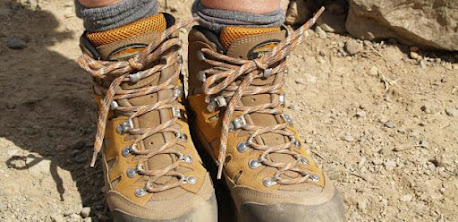Planning a trek in Nepal? Here are some tips (especially for solo/independent travelers)
 Are you planning a trek in Nepal? November 2018 I did a long trek in the Everest region, starting in the village Jiri in the foothills, past Lukla, over Konga La to Everest base camp and then on to the Gokyo valley. If you're planning to do the everest base camp trek or the Three passes trek, some combination of those, or a similar trek in Nepal, here are some quick tips I'd have loved to have known before going on this adventurous hike.
Are you planning a trek in Nepal? November 2018 I did a long trek in the Everest region, starting in the village Jiri in the foothills, past Lukla, over Konga La to Everest base camp and then on to the Gokyo valley. If you're planning to do the everest base camp trek or the Three passes trek, some combination of those, or a similar trek in Nepal, here are some quick tips I'd have loved to have known before going on this adventurous hike. 1. Take all the money you need for your entire holiday with you in cash. It is much easier and cheaper to exchange your own currency for Nepali rupees in Kathmandu than to get it from local ATM's. I must have tried about twenty - there are better ways to spend your time in Kathmandu! I won't go into how much money you'll need as lots of other people have already written blogs about that, but do remember to take enough spare money in case you to need to visit a hospital.
1. Take all the money you need for your entire holiday with you in cash. It is much easier and cheaper to exchange your own currency for Nepali rupees in Kathmandu than to get it from local ATM's. I must have tried about twenty - there are better ways to spend your time in Kathmandu! I won't go into how much money you'll need as lots of other people have already written blogs about that, but do remember to take enough spare money in case you to need to visit a hospital.2. Don't forget to take passport photos with you from home. You'll need them for permits and for purchasing a local SIM-card. I forgot mine amongst all other travel preparations, and it was tough to find somewhere in Kathmandu where they could be taken! Speaking of permits, these are easily bought on the trail itself. I however applied for the visa online, which worked above expectation.

3. Nepalese stairs are killing! The steps are too high for comfort - it's like going two steps at a time - and they go on and on. I don't know how many treks have these extensive stair sections, but the Jiri-Lukla section certainly did. Train with that in mind. Also plan in more time for your trek than you'll think you need and take it easy, or you could end up with an inflamed leg muscle like me.
4. One way or another, high altitude will affect you. Everyone has heard of altitude sickness, but these other effects are not common knowledge, and I underestimated them. Even if you take all the time to acclimatise properly (a must), keeping to the 'above 3000m max 300m elevation gain a day with a resting day every 1000m'-rule and never get altitude sickness, you'll still feel it. Up high, everyone will get much sooner out of breath when active, especially while climbing. It depends what the other effects are. Some people I met got lots of trouble sleeping. Some developed a nasty cough. Once above 4400 meters or so, I lost my appetite and was feeling pretty tired and lethargic all the time. Which was rough. So, mentally prepare yourself for this struggle.
5. If you can take a bus to your trekking area instead of an domestic flight, I encourage you to do so. It is much cheaper, more reliable (as flights are very weather-dependent) and really an authentic experience not to miss. Ask for an express bus ticket at the bus station, though - those aren't luxury by any means but at least everyone has a seat in those, so that's more comfortable. Also, this is rough travel, so come prepared. Take medication if you are prone to motion sickness, as Nepalese roads are very, very bumpy. And take ear plugs, sun glasses, and plenty to eat and drink. Your backpack will likely go on the roof, so pack any valuables in your hand luggage.
6. Some tips for those into photography:
- If in doubt, do take that tripod with you. I didn't really do daytime long exposures, but the starry skies at night are spectaculair. Also, selfies.
- Nepal is incredibly dusty, so prepare to clean your lenses and sensor a lot.
- I took a telezoom lens with me, but never really used it. Nepal for me was all about the layers of steep ridges and suspension bridges and glaciated peaks, huge and epic, hard to capture in a telephoto shot. My portrait lens offered enough zoom when I wanted a bit more of a detail shot.







Comments
Post a Comment